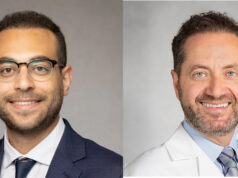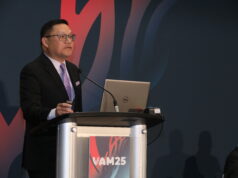
With changes occurring regularly in the publication business of scientific journals, the Society for Vascular Surgery (SVS) is planning changes with its own Journal of Vascular Surgery (JVS) publications. Effective July 1, Immediate Past President Ronald Dalman, MD, will be executive editor of JVS, and will oversee its three sibling journals, JVS-Venous and Lymphatic Disease, JVS-Cases, Innovations and Techniques and JVS-Vascular Science. “He’s chief of the overall JVS ‘brand,’” said Peter Henke, MD, chair of the SVS Publications Committee.
Thomas Forbes, MD, will take over as editor-in-chief of JVS, while Matthew Smeds, MD, Ruth Bush, MD, and Alan Dardik, MD, become editors-in-chief of JVS-VL, JVS-CIT and JVS-VS, respectively. Each editor will recruit and form his or her own teams of associate and assistant editors to carry the journals forward, said Henke. “It’s a team, not just one editor-in-chief,” he said. “This will be the editorial team discussing and coming to consensus on policies and direction.”
With the second of three-year-long terms for the existing editors—Peter Gloviczki, MD, and Peter Lawrence, MD—ending this summer, plus the need for a new publishing contract, the SVS Executive Board thought this the perfect time to investigate possible changes overall, added Henke. The SVS hired a publishing consulting firm to review the entire editorial structure, comparing it to that of other similar publications. This led to SVS leadership’s decision “to make a fairly significant change,” Henke said.
Currently, Gloviczki and Lawrence oversee all four journals. “It’s become a full-time job, and they already have careers,” said Henke. He noted that it became clear the workload needed to be spread across more people.
The team approach also helps the Society fulfill its commitments to diversity, equity and inclusion (DEI) promises to engage younger and more diverse members of SVS as reviewers and editors. With each editor developing his or her own team, many more early-career vascular surgeons will have the chance to get involved and become engaged as reviewers, and move up over time to become editors, he said.
The changeover officially begins July 1, but the new team is already part of the existing one, attending editor calls and learning the ropes. “We’ll take the next three-to-four months to get everyone up to speed and ensure a smooth transition,” Henke said.
Dalman and Forbes are working on their own vision of the future, and they count themselves fortunate and grateful for the “robust team in place with outstanding leadership from the current editorial team,” said Dalman.
“We’re honored to be handed the reigns of the JVS journals and to build on the legacy of Drs. Gloviczki and Lawrence, and their predecessors,” agreed Forbes.
Dalman said both are looking ahead to workflows and other structures to ensure everyone remains “aligned and ‘on brand’ for the high editorial standards of the JVS.” He and Forbes want to boost the efficiency of the review process and institute other changes to ensure all the JVS journals “remain the optimal choice for authors and high-impact manuscripts.”
Dalman added: “We want to explore more synergies between the journals and other media portals of the JVS. Despite its limitations in defining quality and influence in our specialty, we will continue to make structural changes to drive the impact factor to reflect the true value of the journals and their intellectual content. And, we will continue to explore new publishing structures, including further open access ventures, to maximize the impact of our journals’ content.”
Forbes called this an exciting time for academic publishing, “with new opportunities to meet the needs of our audience and our authors and to continue to be the premier vascular surgery journal and platform,” he said. “Just as vascular surgeons are known for their innovations, we will develop innovative delivery models for new knowledge to the benefit of all vascular surgeons and their patients.”












